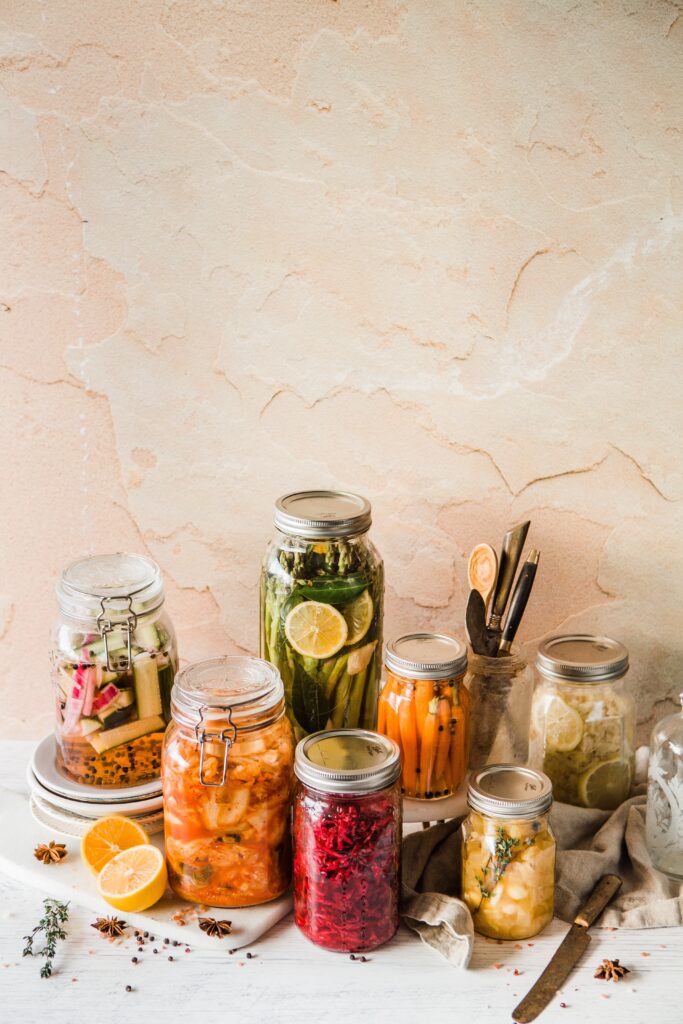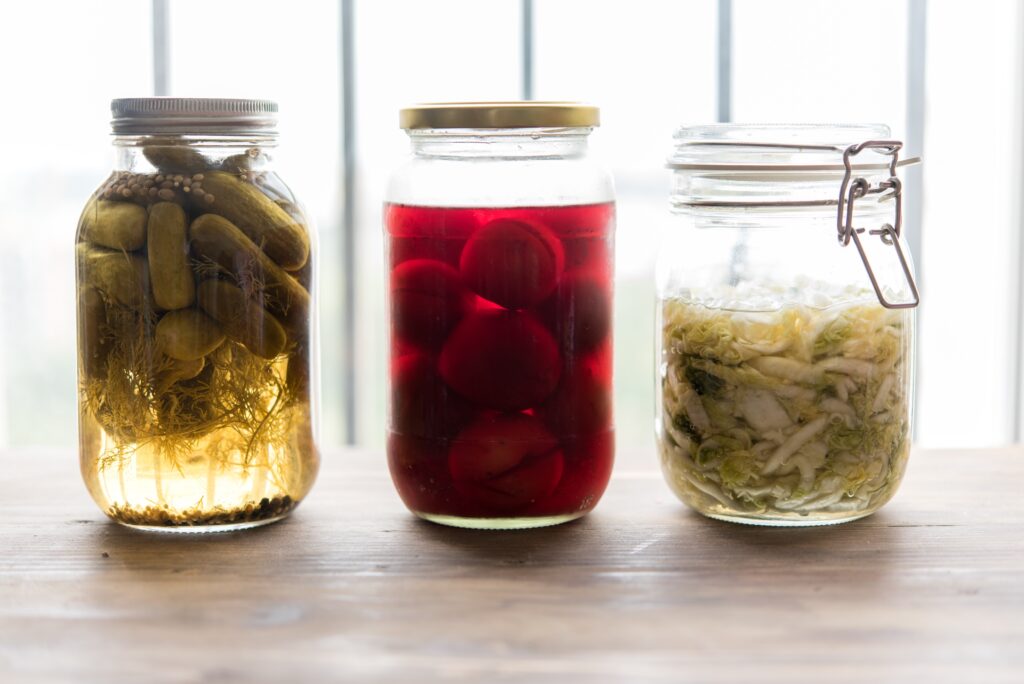Fermented foods have been a staple in diets across the world for centuries, celebrated not only for their unique flavours but also for their incredible health benefits. From tangy sauerkraut to probiotic-rich yogurt, fermentation transforms ordinary ingredients into extraordinary culinary delights while nurturing our gut microbiome. In this article, I will explore how to make your own fermented foods at home and delve into why incorporating these foods into your diet matters for your overall well-being.

Why Fermented Foods Matter
- Probiotic Powerhouses: Fermented foods are natural sources of probiotics, which are beneficial bacteria that promote a healthy gut. A balanced gut microbiome is linked to improved digestion, a robust immune system, and even better mental health.
- Enhanced Nutrient Absorption: Fermentation breaks down complex compounds, making nutrients more accessible and easier for your body to absorb. For instance, fermented vegetables contain higher levels of vitamins and minerals than their raw counterparts.
- Gut-Brain Connection: Emerging research suggests that a healthy gut microbiome can influence your mental health. Consuming fermented foods may contribute to reduced anxiety and depression by nurturing the gut-brain axis.
- Digestive Health: If you suffer from digestive issues like bloating, gas, or irritable bowel syndrome (IBS), fermented foods may provide relief. The probiotics in these foods help maintain a balanced gut, reducing digestive discomfort.
- Immune Support: A significant portion of your immune system resides in your gut. Regularly consuming fermented foods may strengthen your immune response, potentially reducing the frequency and severity of illnesses.
How to Make Your Own Fermented Foods

Now, let’s embark on the journey of making your own fermented foods. Here’s a simple guide to get you started:
1. Choose Your Ingredients: Select your base ingredients. Common choices include cabbage for sauerkraut, cucumbers for pickles, or milk for yogurt. Be sure to use fresh, high-quality ingredients for the best results.
2. Gather Equipment: You’ll need jars or fermentation crocks, a sharp knife, a cutting board, and a weight to keep your ingredients submerged. Ensure that your equipment is clean and sanitised to prevent unwanted contamination.
3. Prepare Your Ingredients: For sauerkraut, thinly slice cabbage and add salt. For yogurt, heat milk to a specific temperature, then cool it. The specific steps will vary depending on the recipe you’re following.
4. Mix and Pack: Mix your ingredients with any seasonings or spices you desire. Pack them tightly into your jar or crock, ensuring there are no air gaps.
5. Fermentation: Seal the container and allow the fermentation magic to happen. The time it takes can vary from a few days to several weeks, depending on the food and desired flavour.
6. Taste and Store: Once your fermented food reaches the desired level of tanginess, taste it. When it’s to your liking, transfer it to the refrigerator to slow down fermentation.
Popular Fermented Foods to Try Making at Home:
- Sauerkraut: Cabbage, salt, and optional spices.
- Kimchi: A spicy Korean fermented cabbage dish.
- Kombucha: Fermented tea, often flavored with fruit or herbs.
- Yogurt: Milk and yogurt starter cultures.
- Pickles: Cucumbers, salt, and dill.
Conclusion
Making your own fermented foods is a rewarding culinary adventure that not only tantalises your taste buds but also nourishes your body from the inside out. By incorporating these probiotic-rich delights into your diet, you’re supporting your gut health, improving nutrient absorption, and potentially boosting your overall well-being. So, embark on this journey, experiment with flavours, and savour the delightful world of fermentation – your gut will thank you.



1 comment